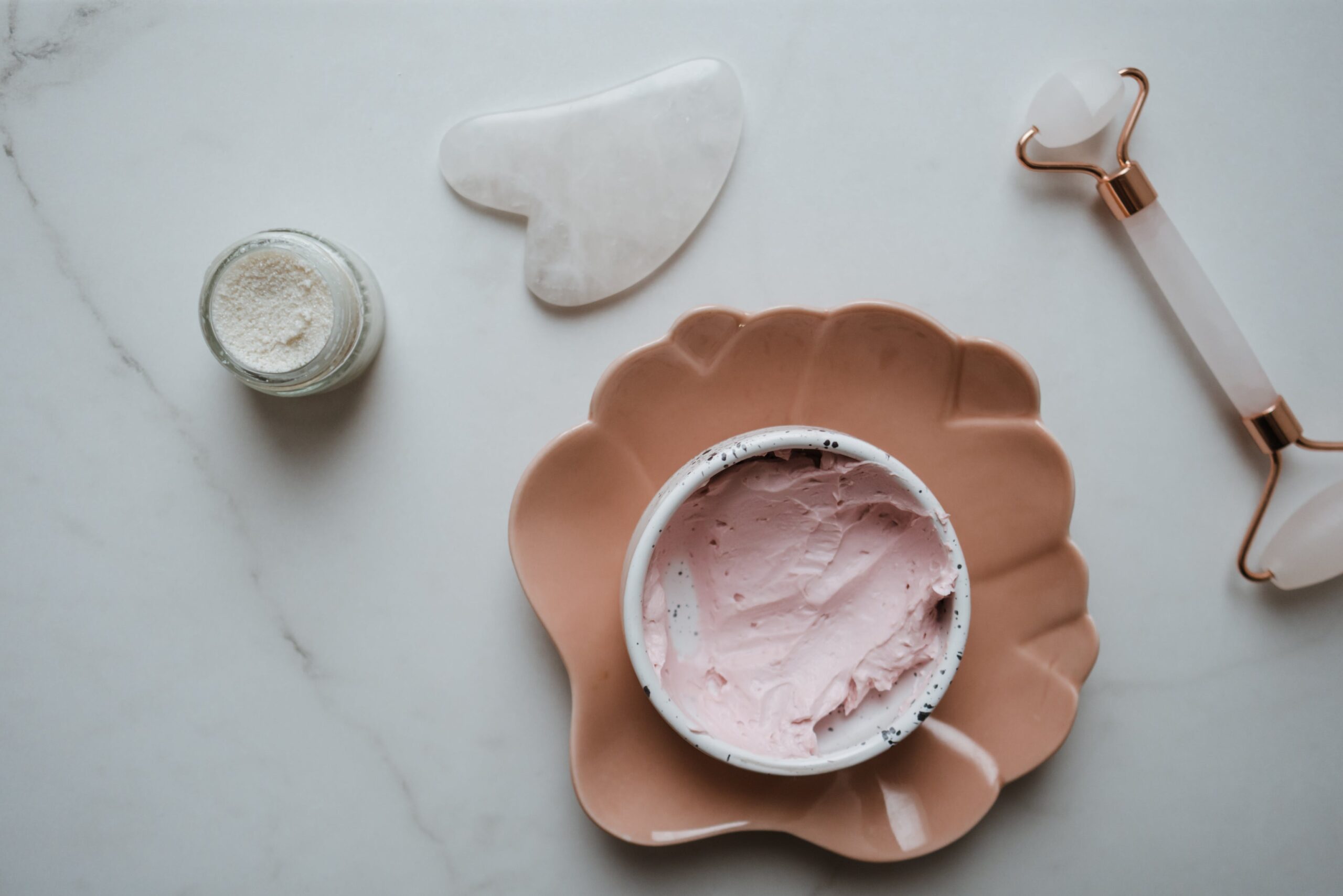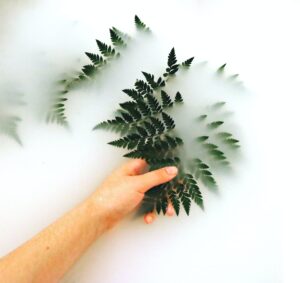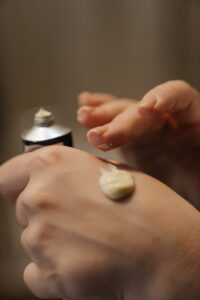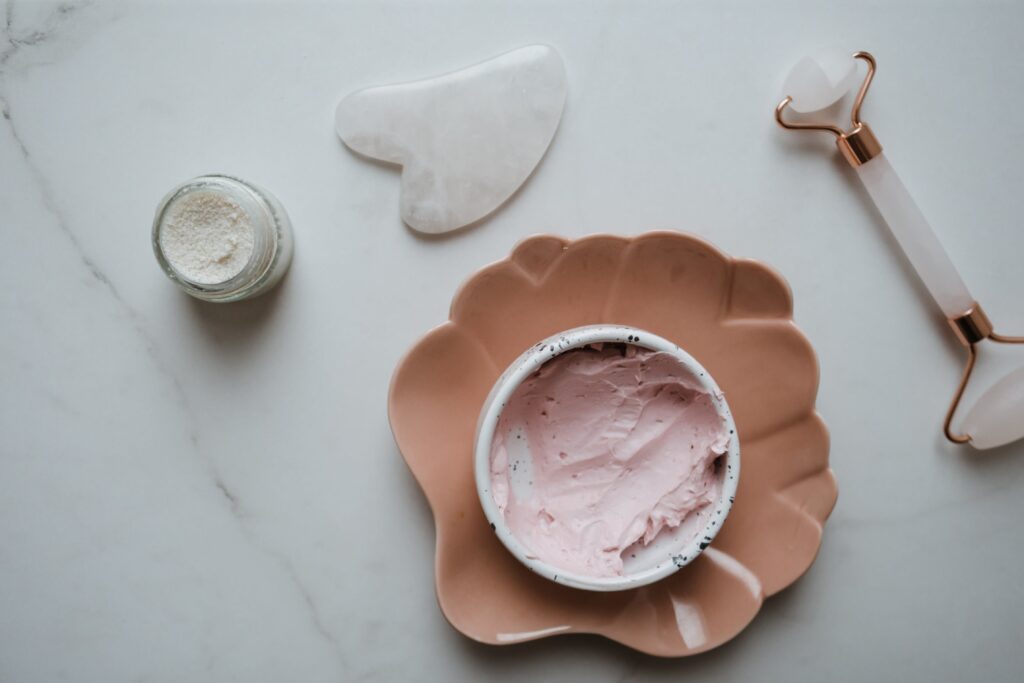
I. Introduction to Exfoliation
A. Understanding the Importance of Exfoliation:
Exfoliation holds significant importance in skincare as it involves the removal of dead skin cells. This process not only helps in uncovering a fresher layer of skin but also aids in improving skin texture and promoting a healthy glow.
B. Types of Exfoliation:
There are various methods of exfoliation, including mechanical (physical), chemical, and enzymatic. Mechanical exfoliation involves physically scrubbing away dead skin cells, while chemical exfoliation uses acids or enzymes to dissolve and remove them. Each type offers distinct benefits and considerations for different skin types.
Exfoliation is a crucial part of skincare that involves removing dead skin cells, unveiling a radiant complexion beneath. The significance of this practice and its various types set the foundation for effective skincare routines.
II. The Science Behind Exfoliation
A. Skin Renewal Process Explained:
The skin renewal process is a natural cycle in which the skin sheds dead cells and regenerates new ones. Exfoliation aids in expediting this cycle by removing the accumulated dead skin cells, allowing fresher skin to surface. Understanding this process is crucial as it highlights the necessity of exfoliation for maintaining healthy and rejuvenated skin.
B. Benefits of Regular Exfoliation:
Regular exfoliation offers numerous benefits for the skin. It helps unclog pores, prevents acne, improves skin texture, promotes better absorption of skincare products, stimulates collagen production, evens out skin tone, and imparts a radiant and youthful appearance. Incorporating exfoliation into a skincare routine can lead to healthier and more vibrant-looking skin.
Exploring the mechanisms behind skin renewal and the multitude of advantages regular exfoliation offers helps in understanding how this process contributes to healthier, more vibrant skin.
III. Different Methods of Exfoliation
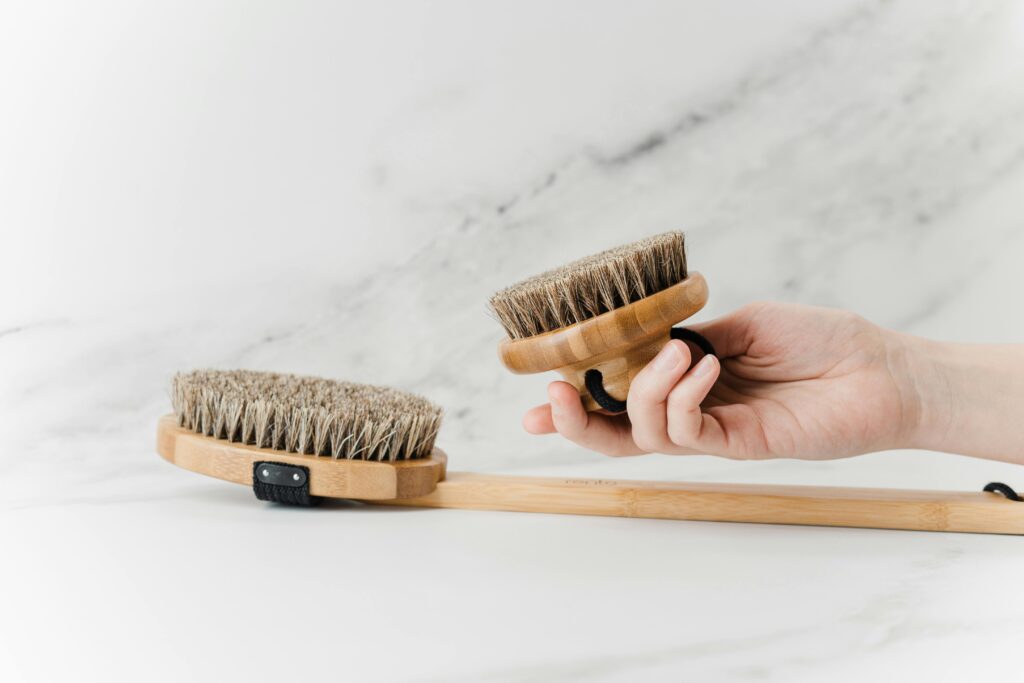
A. Mechanical Exfoliation
Tools and Techniques:
Mechanical exfoliation involves various tools and techniques such as facial scrubs, brushes, loofahs, or exfoliating gloves. These tools aid in physically removing dead skin cells through gentle abrasion or friction. Understanding the diverse tools and their suitable applications helps in effective and safe exfoliation.
Best Practices and Safety Tips:
Employing best practices during mechanical exfoliation is vital. It’s essential to use gentle, circular motions, avoid excessive pressure, and select products appropriate for specific skin types. Regularly cleaning and replacing tools are also crucial to prevent bacteria buildup and skin irritation.
B. Chemical Exfoliation
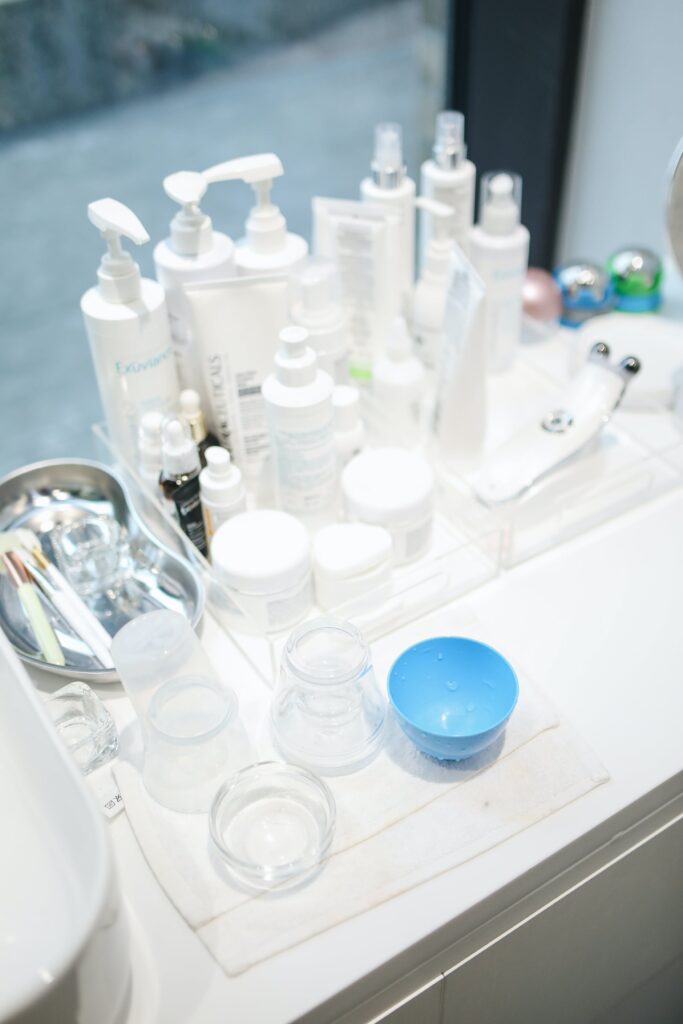
Types of Chemical Exfoliants:
Chemical exfoliants include alpha hydroxy acids (AHAs), beta hydroxy acids (BHAs), and enzymes. AHAs like glycolic acid and lactic acid work on the skin’s surface, while BHAs such as salicylic acid penetrate deeper into pores. Enzymes, like papain from papaya or bromelain from pineapple, dissolve dead skin cells. Understanding these types helps choose the most suitable option for individual skincare needs.
Choosing the Right Product:
Selecting the right chemical exfoliant involves considering skin type, concerns, and desired results. Factors such as concentration, pH level, and formulation play significant roles. Performing a patch test and consulting with a dermatologist or skincare professional can assist in picking a product that suits specific skin requirements while minimizing potential adverse reactions.
Mechanical and chemical exfoliation methods each possess their distinctive tools, techniques, and considerations, catering to diverse skin needs and preferences.
IV. Choosing the Right Exfoliant for Your Skin Type
A. Exfoliation for Different Skin Types
Oily Skin:
Exfoliating oily skin aims to remove excess oil and unclog pores without over-drying. Opt for chemical exfoliants like salicylic acid that penetrate pores, regulating oil production, and preventing acne. Gentle physical exfoliation with caution can also be suitable.
Dry Skin:
For dry skin, choose exfoliants that are hydrating and gentle to prevent further dryness or irritation. Enzyme-based or mild chemical exfoliants like lactic acid or PHA (polyhydroxy acids) can effectively remove dead skin cells without stripping natural oils.
Combination Skin:
Combination skin requires a balanced approach. Focus on using exfoliants that cater to both oily and dry areas. Consider using a combination of AHAs and BHAs to address different skin concerns in various areas of the face.
Sensitive Skin:
Sensitive skin requires extra care during exfoliation to avoid irritation or inflammation. Opt for mild exfoliants with soothing ingredients such as oatmeal, chamomile, or PHA that gently slough off dead skin cells without causing redness or discomfort.
B. Understanding Ingredient Labels:
Understanding ingredient labels on exfoliating products is crucial. Look for key ingredients like AHAs, BHAs, enzymes, or physical exfoliants listed on the label. Knowing the concentration, potential allergens, and understanding terms like ‘gentle,’ ‘fragrance-free,’ or ‘suitable for sensitive skin’ can aid in selecting products tailored to specific skin needs.
Understanding your skin type and decoding ingredient labels aids in selecting the most suitable exfoliant for optimal skincare results.
V. How Often Should You Exfoliate?
A. Frequency Guidelines for Various Skin Types:
- Oily Skin: Exfoliating 2-3 times per week can help manage excess oil without over-drying.
- Dry Skin: Limit exfoliation to once or twice a week to avoid further dryness or irritation.
- Combination Skin: Exfoliate 2-3 times weekly, adjusting frequency based on specific skin needs in different areas.
- Sensitive Skin: Gentle exfoliation once a week or every other week can prevent irritation while maintaining skin health.
B. Signs of Over-Exfoliation:
- Increased Sensitivity: Skin becomes more sensitive, red, or inflamed than usual.
- Dryness or Flakiness: Excessive exfoliation can strip away natural oils, leading to dry patches or flakiness.
- Irritation or Burning: Skin may feel irritated, itchy, or experience a burning sensation.
- Breakouts: Paradoxically, over-exfoliation can cause breakouts due to skin barrier damage.
- Persistent Redness: Prolonged redness after exfoliation is a sign of potential overuse.
Monitoring these signs helps in recognizing when to reduce exfoliation frequency or switch to gentler products to maintain skin health.
VI. DIY Exfoliation Recipes and Natural Alternatives
Homemade Exfoliants:
Homemade exfoliants offer a natural and cost-effective way to exfoliate the skin. These can include:
- Sugar or salt scrubs: Mixed with oils like coconut or olive oil for gentle physical exfoliation.
- Oatmeal scrubs: Ground oatmeal mixed with water or yogurt to soothe and exfoliate sensitive skin.
- Coffee grounds: Used as a scrub for its antioxidant properties and gentle exfoliation.
Natural Ingredients for Exfoliation:
Various natural ingredients possess exfoliating properties suitable for skincare:
- Fruit enzymes: Pineapple, papaya, or pumpkin contain natural enzymes that gently dissolve dead skin cells.
- Clay: Kaolin or bentonite clay absorbs impurities and helps in exfoliation by removing excess oil.
- Yogurt: Contains lactic acid, providing mild exfoliation and hydration.
- Honey: Has antibacterial properties and acts as a gentle exfoliant while moisturizing the skin.
These natural ingredients can be incorporated into skincare routines to provide effective and gentle exfoliation while avoiding harsh chemicals.
Crafting homemade exfoliants using natural ingredients offers a cost-effective and organic approach to skincare, promoting a healthy glow.
VII. Preparing Your Skin for Exfoliation
Pre-Exfoliation Skincare Routine:
Prior to exfoliation, following a preparatory skincare routine can enhance its effectiveness and safety:
- Cleansing: Begin with a gentle cleanser to remove makeup, dirt, and impurities from the skin.
- Patch Test: If using a new exfoliant, perform a patch test to check for any adverse reactions or allergies.
- Hydration: Apply a hydrating toner or essence to prep the skin and maintain its moisture balance.
- Sunscreen: Ensure the skin is adequately protected with sunscreen, especially if planning to exfoliate during the day.
B. Precautions and Considerations:
- Skin Sensitivity: Take into account any skin conditions or sensitivities before choosing an exfoliation method.
- Avoid Broken Skin: Refrain from exfoliating on open wounds, cuts, or areas with active acne to prevent irritation.
- Gentle Approach: Apply gentle pressure and avoid aggressive scrubbing to prevent skin damage.
- Follow Instructions: Adhere to recommended usage instructions and durations to prevent over-exfoliation.
- Post-Exfoliation Care: After exfoliation, soothe the skin with a moisturizer or soothing serum to replenish lost moisture.
These precautions and a well-thought-out pre-exfoliation routine contribute to a safer and more effective exfoliation experience, promoting healthier skin.
A pre-exfoliation skincare routine coupled with essential precautions sets the stage for a safe and effective exfoliation process.
VIII. The Exfoliation Process Step-by-Step
A. Step 1: Cleansing
- Begin the skincare routine by cleansing the face using a gentle cleanser to remove impurities, makeup, and excess oil. This step prepares the skin by ensuring it’s clean and ready for exfoliation.
B. Step 2: Exfoliating
- Apply the chosen exfoliant according to its instructions. For mechanical exfoliants, gently massage the product onto damp skin in circular motions. For chemical exfoliants, apply as directed and allow them to work without rubbing.
C. Step 3: Post-Exfoliation Care
- After exfoliation, it’s crucial to provide proper post-care:
- Hydrate: Use a hydrating toner or serum to replenish moisture.
- Moisturize: Apply a moisturizer to lock in hydration and restore the skin’s barrier.
- Sun Protection: Finish with sunscreen, especially during the day, to shield the skin from UV damage.
Following these steps in the right order helps in achieving effective exfoliation while maintaining skin health and minimizing potential irritation or damage.
A systematic breakdown of the exfoliation process, from cleansing to post-care, ensures optimal results and skin recovery.
IX. Targeted Exfoliation for Specific Areas
A. Facial Exfoliation Techniques:
- Gentle Scrubbing: Use circular motions with your fingers or a soft-bristled brush to apply a facial scrub. Be delicate, especially around sensitive areas like the eyes.
- Chemical Exfoliation: Apply a chemical exfoliant (such as a serum or toner) containing AHAs, BHAs, or enzymes to gently dissolve dead skin cells. Pat it onto the skin and avoid the eye area.
- Exfoliating Tools: Consider using facial cleansing devices or exfoliating brushes designed for the face. Ensure these tools are suitable for your skin type and use them gently.
B. Body Exfoliation Tips:
- Body Scrubs: Use body scrubs containing sugar, salt, or coffee grounds to exfoliate the body. Apply in gentle circular motions, focusing on rough areas like elbows, knees, and heels.
- Exfoliating Gloves or Brushes: Utilize exfoliating gloves or body brushes to slough off dead skin cells while showering. Use with a gentle touch to prevent irritation.
- Chemical Exfoliation Products: Consider body lotions or serums with chemical exfoliants like glycolic acid or lactic acid for a more even and thorough exfoliation.
Always be cautious with both facial and body exfoliation, adjusting the technique and pressure based on skin sensitivity to prevent irritation or damage.
Tailoring exfoliation techniques to different body areas maximizes the benefits and addresses specific skin needs effectively.
X. Integrating Exfoliation into Your Skincare Routine
A. Morning vs. Night Exfoliation:
- Morning Exfoliation: Exfoliating in the morning can help remove dead skin cells accumulated overnight, preparing the skin for better makeup application and product absorption. However, ensure adequate sun protection afterward as exfoliation can increase sun sensitivity.
- Night Exfoliation: Nighttime exfoliation allows the skin to renew while you sleep. It can be more effective as the skin is in repair mode, aiding in better product absorption. Night exfoliation also minimizes sun exposure concerns.
B. Combining Exfoliation with Other Products:
- Serums and Moisturizers: After exfoliation, apply serums with active ingredients like hyaluronic acid or antioxidants to hydrate and nourish the skin. Follow up with a moisturizer to seal in moisture.
- Avoid Harsh Combinations: Refrain from using multiple exfoliating products simultaneously to prevent over-exfoliation, irritation, or damage to the skin barrier.
- Sunscreen Application: Regardless of the time of day you exfoliate, always apply sunscreen during the day to protect the skin from harmful UV rays. Combining exfoliation with sunscreen ensures skin protection and minimizes the risk of sun damage.
Integrating exfoliation into your skincare routine with the appropriate timing and combination with other products enhances its effectiveness while maintaining skin health.
Incorporating exfoliation into daily routines, along with synergistic skincare products, enhances its efficacy and overall impact on skin health.
XI. Common Mistakes to Avoid When Exfoliating
A. Over-Exfoliation Pitfalls:
- Increased Sensitivity: Over-exfoliation can make the skin more sensitive, leading to redness, irritation, and discomfort.
- Dryness or Flakiness: Excessive exfoliation may strip away natural oils, causing dry patches or flakiness on the skin.
- Inflammation or Breakouts: Over-exfoliation can compromise the skin barrier, resulting in inflammation and potential breakouts.
B. Misconceptions and Myths:
- “The More, the Better”: Contrary to belief, excessive exfoliation doesn’t equate to better results. Overdoing it can harm the skin rather than improve it.
- “All Skin Types Can Handle the Same Frequency”: Different skin types require varying levels of exfoliation. What works for one skin type might not be suitable for another.
- “Natural Means Safer”: While natural ingredients can be beneficial, they can still cause irritation or sensitivity if overused or if one is allergic to them.
Understanding the pitfalls of over-exfoliation and debunking misconceptions allows for a more informed approach to skincare, preventing potential harm to the skin.
XII. Benefits Beyond Skin Deep: Exfoliation and Overall Health
A. Psychological Benefits:
- Enhanced Confidence: Regular exfoliation often leads to improved skin texture, tone, and a more radiant complexion, boosting self-confidence and self-esteem.
- Relaxation and Stress Reduction: The act of self-care through skincare routines, including exfoliation, can be relaxing and provide stress relief, contributing to overall well-being.
B. Impact on Skin Conditions:
- Acne: Exfoliation can help unclog pores and prevent acne breakouts by removing dead skin cells and reducing excess oil buildup.
- Hyperpigmentation: Consistent exfoliation may aid in fading hyperpigmentation and dark spots by promoting cell turnover and revealing fresh skin.
- Fine Lines and Wrinkles: Regular exfoliation might improve the appearance of fine lines and wrinkles by encouraging collagen production and smoothing skin texture.
Understanding the psychological benefits and the impact on various skin conditions emphasizes the broader positive effects of incorporating exfoliation into skincare routines for both mental well-being and skin health.
Exploring the psychological benefits and its effects on various skin conditions highlights the holistic advantages of exfoliation.
XIII. Post-Exfoliation Recovery and Aftercare
A. Soothing Irritated Skin:
- Calming Ingredients: Use soothing products containing aloe vera, chamomile, or colloidal oatmeal to alleviate irritation caused by over-exfoliation or sensitivity.
- Cooling Effect: Applying a cool compress or using a gentle, fragrance-free moisturizer can help soothe and calm irritated skin.
B. Hydration and Nourishment:
- Hydrating Ingredients: Opt for moisturizers with hyaluronic acid or glycerin to lock in moisture and prevent dryness after exfoliation.
- Nourishing Oils: Consider using facial oils rich in antioxidants like argan oil or jojoba oil to nourish the skin and restore its natural balance.
Properly soothing and hydrating the skin after exfoliation is crucial to maintain skin health, restore balance, and prevent any adverse effects like dryness, irritation, or discomfort.
Post-exfoliation care routines focusing on skin soothing, hydration, and nourishment aid in replenishing the skin’s natural balance.
XIV. Addressing Concerns and Risks
A. Sun Sensitivity and Protection:
- Increased Sensitivity: Exfoliation can temporarily increase skin sensitivity to sunlight due to the removal of the skin’s protective layer. It’s crucial to apply sunscreen with broad-spectrum SPF to shield the skin from harmful UV rays.
- Sun Protection Measures: Aside from sunscreen, consider wearing protective clothing, hats, and seeking shade, especially during peak sun hours, to minimize potential sun damage post-exfoliation.
B. Exfoliation during Pregnancy or with Certain Conditions:
- Pregnancy: Some exfoliating ingredients, particularly strong chemical exfoliants like retinoids or high concentrations of salicylic acid, might not be recommended during pregnancy. Consult a healthcare professional for safe alternatives.
- Sensitive Skin or Conditions: Individuals with sensitive skin or certain skin conditions like eczema or rosacea should opt for gentle exfoliation and avoid harsh exfoliants that may exacerbate these conditions. Consult a dermatologist for suitable exfoliation methods.
Understanding sun sensitivity after exfoliation and considering special circumstances like pregnancy or specific skin conditions ensures safer skincare practices and helps avoid potential complications. Consulting healthcare professionals or dermatologists for guidance is advisable in such situations.
XV. Summary of Key Exfoliation Points
In summary, having a comprehensive understanding of exfoliation’s various techniques, considerations, potential side effects, and its array of benefits is essential for establishing an effective and tailored skincare routine.
Conclusion
Mastering the art of exfoliation is pivotal in unlocking healthier, more radiant skin. Incorporating the right techniques, understanding individual skin needs, and adopting a balanced approach are key to reaping its benefits.
FAQs about Exfoliation
A. What is the ideal exfoliation frequency?
- The ideal exfoliation frequency varies based on individual skin types. Generally, exfoliating 1-3 times a week for most skin types is recommended. However, it’s essential to adjust the frequency based on skin sensitivity and response to avoid over-exfoliation.
B. Can I exfoliate if I have sensitive skin?
- Yes, individuals with sensitive skin can exfoliate, but they should choose gentle exfoliants and be cautious about frequency. Using mild exfoliants, such as those with oatmeal, fruit enzymes, or PHAs, and exfoliating less frequently can help prevent irritation.
C. How can I tell if I’m over-exfoliating?
- Signs of over-exfoliation include increased skin sensitivity, dryness, redness, irritation, flakiness, or a burning sensation after exfoliation. If you notice these signs, reduce the frequency of exfoliation or switch to gentler products to allow the skin to recover.
D. Are there any natural alternatives to commercial exfoliants?
- Yes, several natural ingredients can serve as gentle exfoliants. Examples include oatmeal, sugar, coffee grounds, fruit enzymes (from pineapple or papaya), clay (like kaolin or bentonite), and yogurt. These natural alternatives can effectively exfoliate without the harshness of some commercial products.
Unlocking the secrets of exfoliation enhances your skincare regimen, promoting healthier, glowing skin. For further exploration and detailed guidance, delve into the world of exfoliation with our comprehensive guide.
